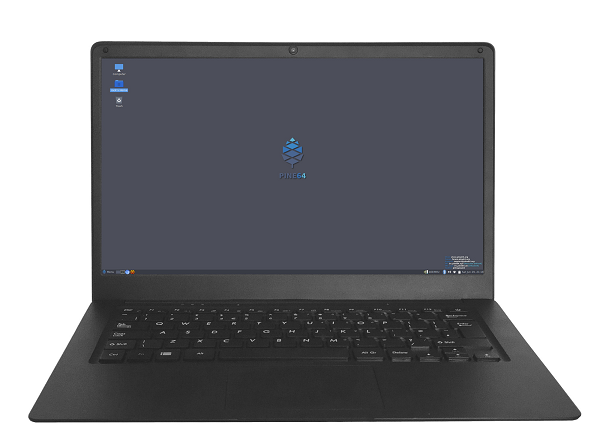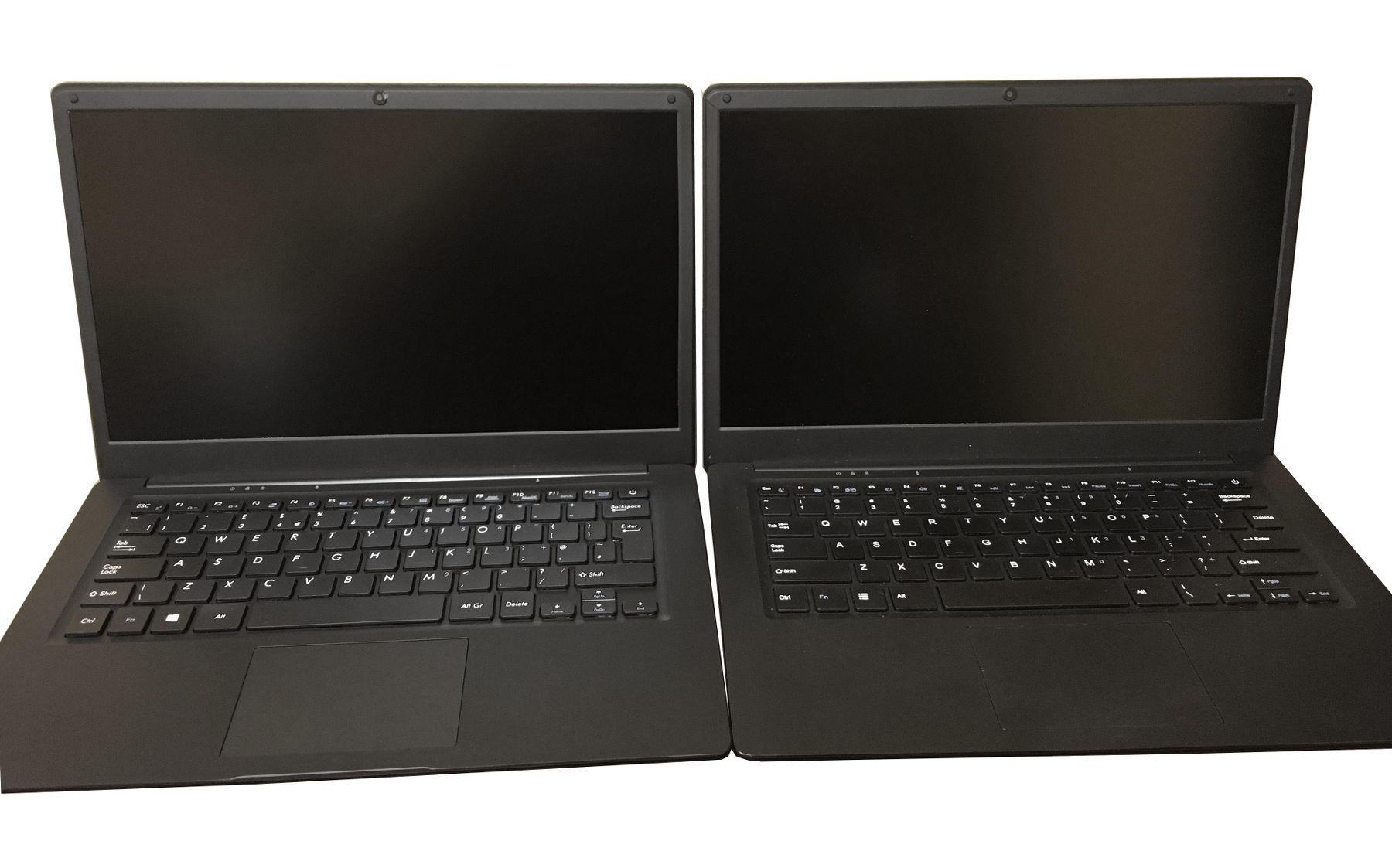Sometimes it seems that Chromebooks and basically buy in order to put Linux on them. Offhand articles on a habr : one , second , third , fourth , ...
Therefore , PINE Microsystems Inc. and the PINE64 community have decided that the market apart from the Chromebook convenience foods is lacking Pinebook Pro , which was immediately designed to use Linux / * BSD as the operating system.

There is already an article on Habré about this device with an emphasis on the ability to turn on / off the hardware modules of the camera, microphone and WiFi / Bluetooth. But on the one hand I would like to consider this laptop in more detail, and on the other hand tell about the changes that have occurred.
It is worth noting that the modern version of the laptop has slightly different key combinations for hardware shutdown of the corresponding modules (peripheral power is turned off without the possibility of switching on from the OS side):

Yes, and now you need to clamp these combinations not 10, but 3 seconds.
Let me remind you of the main technical characteristics of the laptop, which is built on the basis of the SoC Rockchip RK3399:
That is, in fact, the laptop is built around a single-board computer, to which a keyboard and touchpad are connected via USB 2.0 and a FullHD screen using eDP MiPi protocol.
As noted in the specifications table, the laptop is available with two keyboard options (ISO and ANSI):

Two keyboard options appeared after user feedback as early as the announcement of the new device. Initially, only an ISO layout was supposed, but the company listened to the opinions of future users and added the ability to order a laptop with an ANSI layout.
By default, the SoK RK3399 has a hardware-defined boot sequence that prefers internal memory (eMMC) over an SD card. But the developers wanted to give users a convenient opportunity to try operating systems other than the firmware in eMMC. Therefore, the bootloader code was modified to start the OS from the SD card, if it is there.
By default, laptops come with the Debian operating system, which has MATE (the successor to GNOME 2) as the desktop environment. In addition to it (at the moment) on the official Wiki page there are prepared images of the following OS:
 Bionic lxde
Bionic lxde Bionic mate
Bionic mate Chromium os
Chromium os Android 7.1
Android 7.1
The LINUX Unplugged> Pinebook Pro Review has an interesting use case. You can hold an SD card with Chromium OS in case your friend / wife / child wants to use Pinebook Pro to surf the Internet.
There are already starting assemblies of Q4OS, Manjaro Preview, but it's too early to talk about a ready-made solution for the end user. Active work is underway on Fedora 31, Kali Linux, Arch and other operating systems. At the same time, the development of the main Debian assembly (with MATE) also takes place ( Pinebook Pro ›Default OS update log ): performance is improved, support for new software appears, and power consumption improves.
Although * BSD systems were indicated in all press releases, PINE is not yet actively supporting this family of OSs. However, judging by previous laptop models, around the company's products there are active participants in the * BSD community, which, as they receive their copies of the devices, add the necessary support. PINE64 employees expect support for a large number of operating systems (both Linux and * BSD) in January 2020 .
An interesting example of interaction with your community can be seen on the other hand: a group of people want to develop protective laptop cases . PINE64 in response to this provided users with .dwg files with exact specifications of the case and declares its readiness to promote such projects in the future, up to including them in the official store.

In general, it seems that PINE64 strongly encourages research on their device. For example, a laptop has a documented way to enable UART output through an audio jack :

It is also encouraging that developers take bugs seriously throughout their entire life cycle. For instance:
- Before the release of the first batch, it turned out that the computer does not start when the battery is disconnected. To solve this problem, two cables (bypass cable) appeared in the case, disconnected by default. To operate the device with the battery disconnected, these cables must be connected to supply power to the motherboard.
- After the release of the first batch of laptops, users began to complain about problems with the trackpad and keyboard: input delays, missing clicks. The developers received the source codes for the firmware of the input devices, fixed the errors, and distributed the new firmware from their site along with the update utility. And modern devices come from the factory with corrected firmware.
Let's move on to more unpleasant things: price. They like to write about this laptop that it is a laptop for $ 199.99. However, DHL’s delivery must be added to this price, which, for example, for the United States immediately turns it into 233 dollars:

For comparison, ordering a device to Finland will be even more expensive:

But for residents of Russia it is still sadder, there is simply no delivery:

As I understand it, part of the range of electronics can be ordered from them in the store, but not Pinebook Pro. I clarified this in support of the official PINE64 store, the answer confirmed the lack of the ability to order the device in Russia:
We are unable to import the Pinebook Pro to Russia due to the Express carriers have no service for B2C electronics devices. Only for document.
Someday if our partner have registered RU Federal Security Service, will possible to import.
That is, the cost of delivery of the device from the USA or Europe must be added to the cost.
It is also worth noting that on the order page there is a small (but highlighted in red) remark, the brief essence of which is:
A small number of broken pixels (1-3) is the norm for LCD screens and should not be considered a defect. We do not make profit from the sale of these units , so do not buy Pinebook Pro if a broken pixel prompts you to file a dispute through PayPal.
English- Small numbers (1-3) of stuck or dead pixels are a characteristic of LCD screens. These are normal and should not be considered a defect.
- When fulfilling the purchase, please bear in mind that we are offering the Pinebook Pro at this price as a community service to PINE64, Linux and BSD communities. We make no profit from selling these units. If you think that a minor dissatisfaction, such as a dead pixel, will prompt you to file a PayPal dispute then please do not purchase the Pinebook Pro. Thank you.
The official forum also mentions that Pinebook and Pinebook Pro are sold at cost. Therefore, the language does not turn to reproach the company for such pricing.
At the time of writing this publication, a pre-order for the current batch is open, which will be manufactured and delivered to consumers before the Chinese New Year (February 2020): devices with an ISO layout are planned to be released in late December, and laptops with an ANSI keyboard layout will be released behind them ( beginning of January). But large volumes of deliveries from China (Christmas, Chinese New Year) can slightly shift the timeline. However, it should be borne in mind that devices from the next series (which will be after the Chinese New Year) will be delivered to the owners at the end of March - beginning of April 2020.
I came across this laptop at a time when I myself needed an inexpensive thin client (RDP for Windows machines and SSH). I considered the options for using chrome-beech, but became interested in such a non-standard product. Judging by the description, this beast will be quite enough for me ( according to statements in the press, the laptop copes with playing 1080p 60fps video ), so I intend to take it for myself. After some time of operation, I plan to write another article, in connection with this I invite all interested in the review to comments, private messages or mail (eretik.box  gmail
gmail  com) with suggestions on what to test, what to look for.
com) with suggestions on what to test, what to look for.